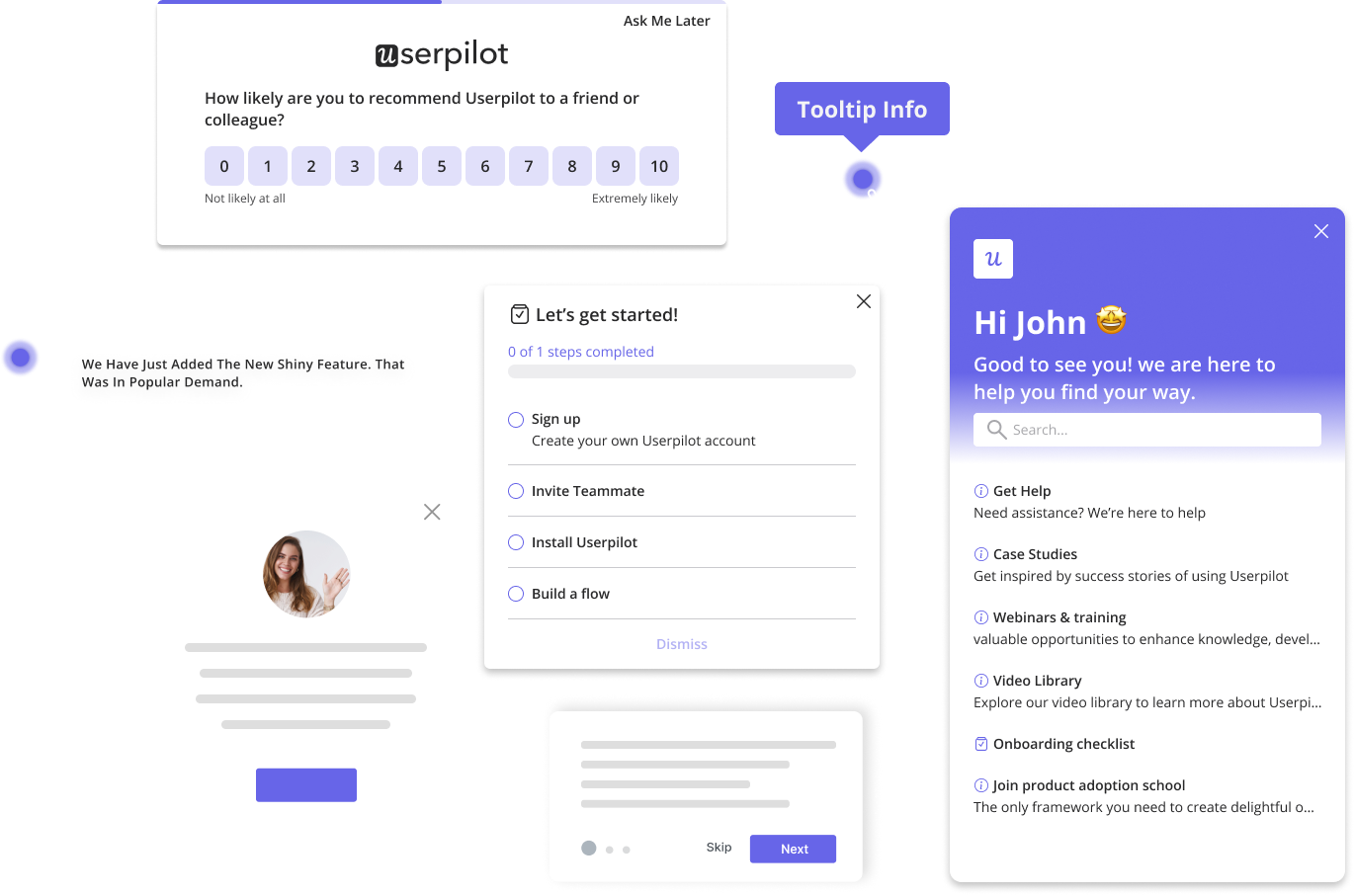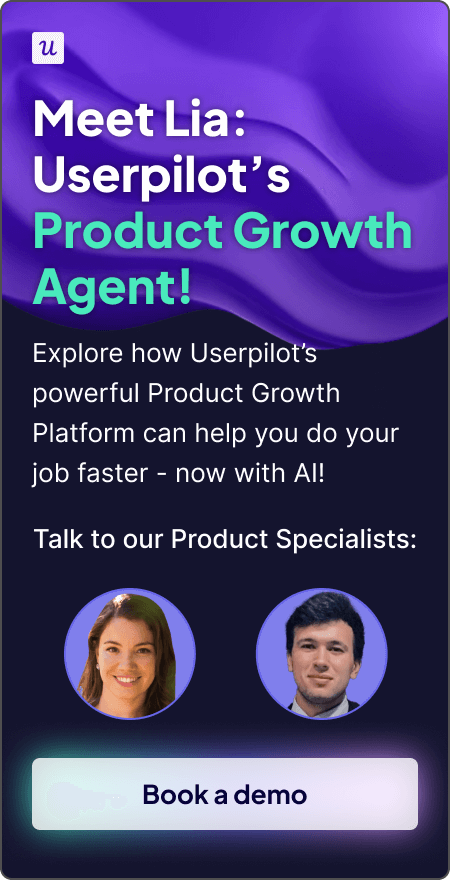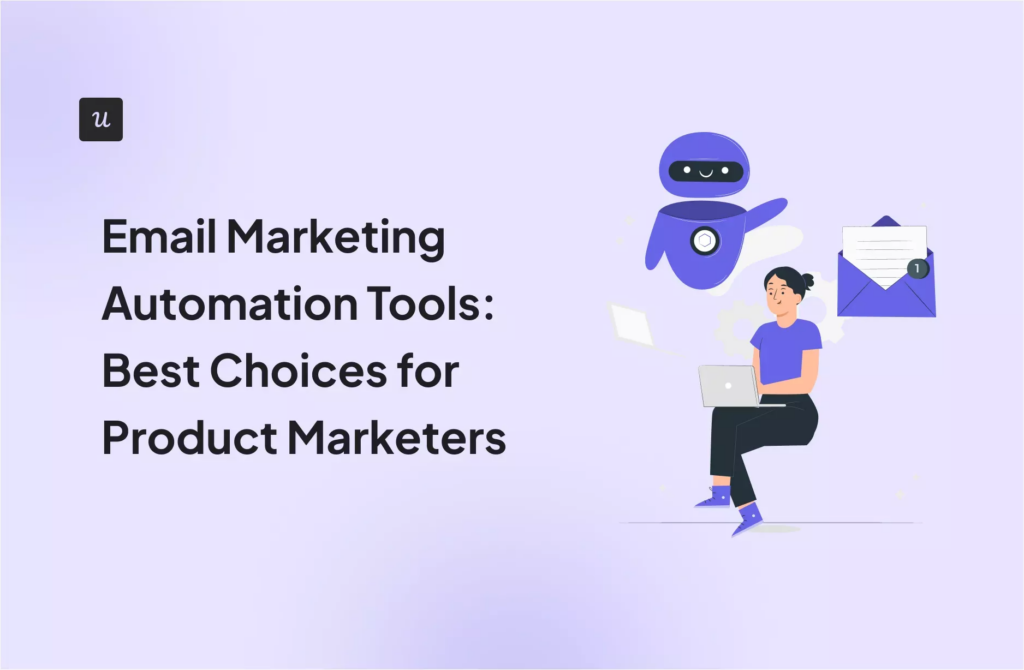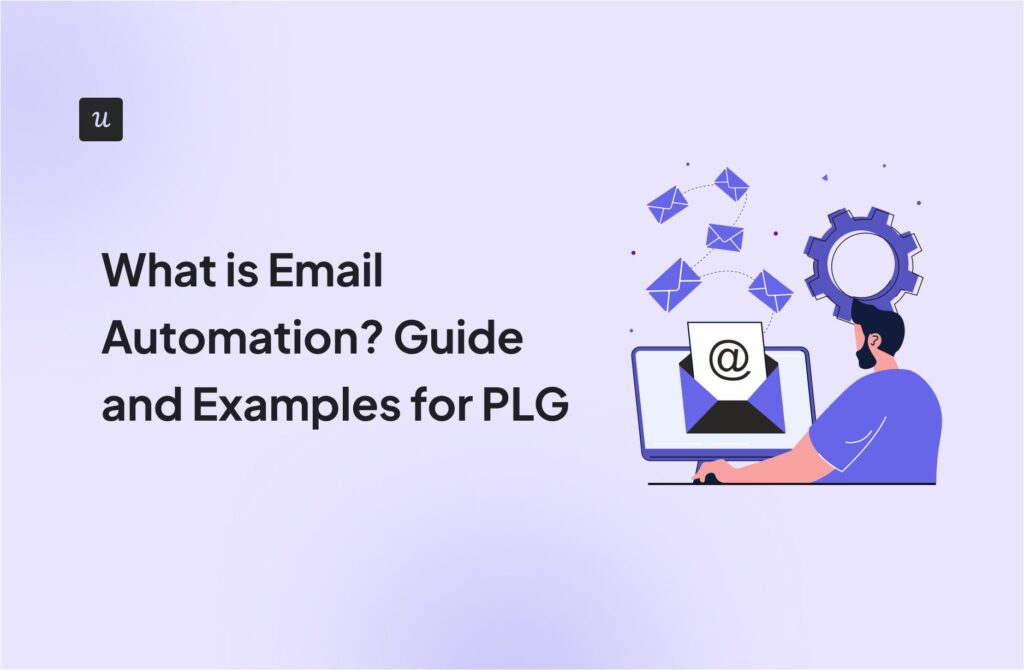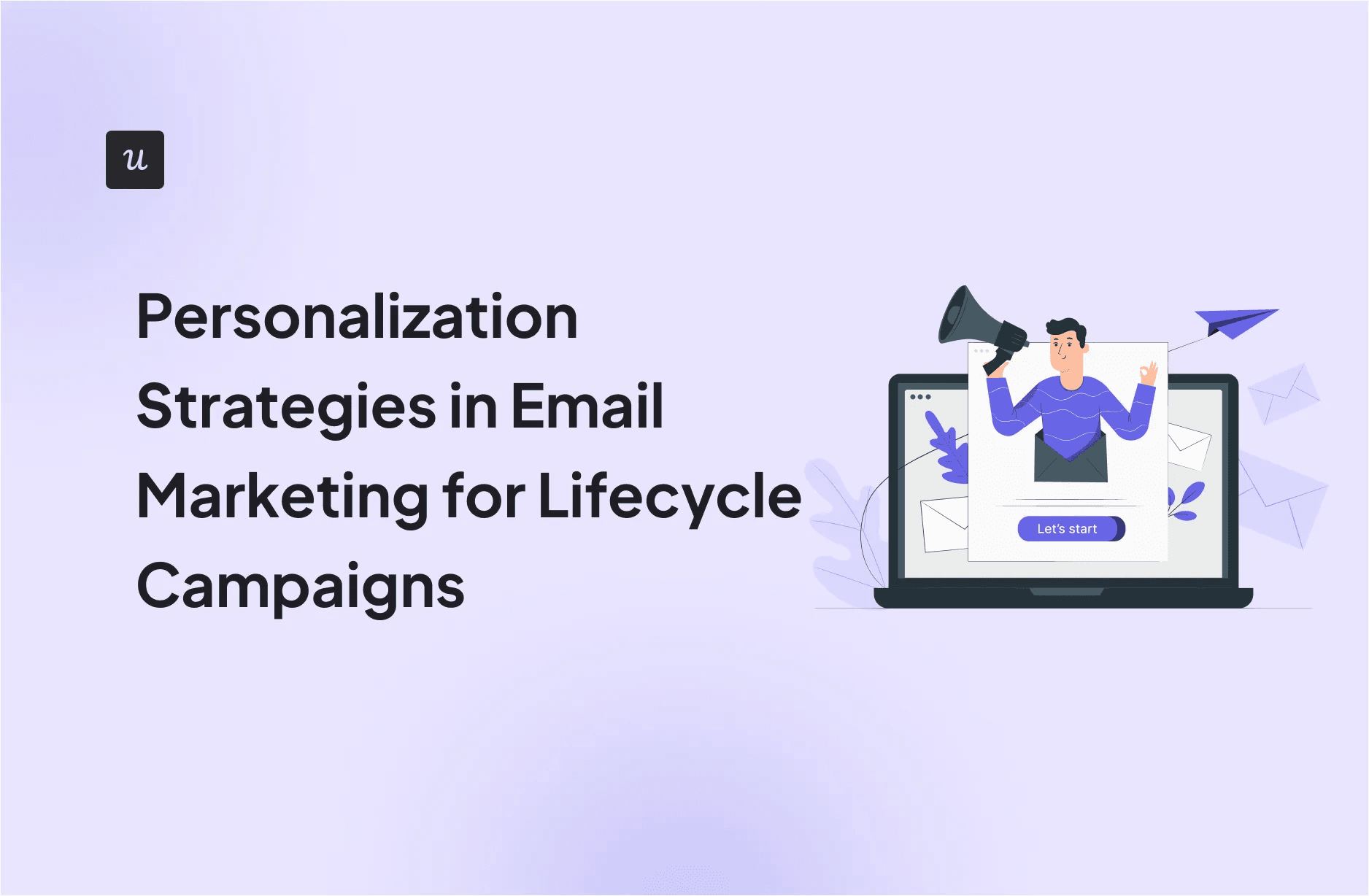
Personalization Strategies in Email Marketing for Lifecycle Campaigns
On average, a person receives over 100 emails per day. No wonder we ignore or delete some of them almost instantly, even those value-packed industry newsletters we signed up for very deliberately.
So, what you need to do is ensure your emails are useful and awaited. And the answer to that is personalization strategies in email marketing.
Not the token kind that just plugs in the first name. I’m talking about lifecycle-based email personalization. These are emails that adapt based on where your customer is in their journey, what they care about, and how they engage with your product.
In this article, I’ll explain how to create such email personalization strategies, along with best practices and real-world examples to help inspire your next campaign.
What’s your biggest challenge with personalization in email marketing?
Understanding your primary hurdle helps tailor the right solution.
How are you currently implementing your email personalization?
This helps us understand the sophistication of your current strategies.
Unlock your full email marketing potential
It looks like you’re ready to move beyond basic personalization. The most effective personalization strategies in email marketing are tied directly to user behavior within your product. See how Userpilot can help you send the right message, to the right user, at the right time.
Try Userpilot Now
See Why 1,000+ Teams Choose Userpilot
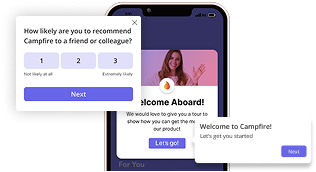
8 Personalized email marketing strategies and best practices for PLG campaigns
For SaaS companies building lifecycle email strategies, personalization and automation are non-negotiable. Email campaigns should guide users from signup to activation to everyday use, all while syncing with in-product communication. And since every user journey is unique, both the emails and flows need to adapt accordingly.
Not to mention, we all want our emails opened. And personalized email marketing campaigns see 41% higher click-through rates than generic ones.
To help you build personalized lifecycle email campaigns, here are 8 strategies best suited for PLG companies.
1. Trigger emails based on real-time customer data
For lifecycle emails in your flow to deliver at just the right moment, set up automated triggers based on user behavior. These event-based emails respond instantly and contextually to what a user does or doesn’t do.
Some common examples include:
- If someone gives a low NPS score, trigger a follow-up email inviting them to contact customer support or share more feedback.
- Send a congratulations message after a new user completes their first activation event, with instructions for the next step.
- When a user hasn’t logged in for a set number of days, send a re‑engagement nudge suggesting what to do next.
To achieve this, you’ll need a tool that supports event-based triggers. However, while many email marketing platforms offer this, they require separate integrations to access product data. Instead, using an all-in-one product platform like Userpilot simplifies the process, letting you use product usage data to directly inform email settings.

2. Segment the audience based on their lifecycle journey
Some emails, like feature announcements, can go out to all users. But most should only be sent to specific user segments based on where they are in their lifecycle. This way, every message moves users along their ideal success path towards faster activation.
For PLG companies, a good way of segmenting users is by their JTBDs and customer journey stage (i.e., explorers, beginners, regulars, and champions).

Here’s everything I consider when building these segments:
- The users’ jobs or JTBDs: This is the first step to personalizing onboarding paths and showing relevant content to a given segment. Collect this data during signup or welcome surveys.
- Plan type and subscription date: Explorers and beginners are mostly on free plans, whereas regulars and champions choose paid ones.
- Onboarding progress: Use funnel analytics and event tracking to see how users interact with onboarding flows. E.g., have they completed the onboarding checklist? This identifies beginners who need nudges to finish onboarding.
- Activation status: Use funnels to find users who followed the activation path and reached their ‘Aha’ moment. Then move them toward deeper engagement through secondary onboarding, turning beginners into regulars.
- Level of engagement: Track feature adoption with funnel analytics and feature usage data to locate regulars using multiple features who are ready to become champions.
- User loyalty: Measure login frequency to spot habitual users, e.g., users who log in daily. These users can be further nurtured for advocacy and word of mouth.

After defining these segments, I design personalized email journeys for each:
- Explorers: Welcome, re‑engagement, or check-in emails.
- Beginners: Secondary onboarding, usage review, or trial expiry emails.
- Regulars: Community-building and renewal/upsell emails.
- Champions: NPS survey, referral, or special offer emails.
For deeper insights on each email type and more examples on creating personalized emails for these segments, take a look at this article: 12 Lifecycle Email Marketing Examples for Successful PLG.
3. Go beyond the first name when personalizing the subject line and body
Using a customer’s or subscriber’s first name is a good start, but personalization shouldn’t end there. I try tailoring email content using other data points, too, such as:
- Performed tasks: I often mention them in re-engagement emails, for example: “We noticed you created your first dashboard but haven’t returned yet.” This shows the user we care about their journey.
- Subscription details: They can fuel personalized upsell emails, such as “Your trial ends in three days. Ready to unlock full features?”
- Usage statistics: They’re useful for milestone celebratory emails, such as “Last month you created three dashboards. Here’s how to get even more out of them.” Seeing their achievements summed up motivates the user to continue using the tool and gives a sense of accomplishment.

This level of email personalization is possible with dynamic content. Dynamic content pulls data such as user behavior, plan details, or milestones from your product database. And then automatically inserts that data into each email, making every message relevant to the individual.
4. Make your emails part of an omnichannel marketing strategy
For SaaS companies, email marketing campaigns shouldn’t exist in isolation. Instead, they need to fit into a larger omnichannel strategy that, as mentioned, walks users through all lifecycle stages, creating a seamless user experience. It’s important not to repeat the same messages on every channel, though, but make them a coherent story.
Two key channels I focus on aligning with email are:
- In-app messaging: Deliver tips, nudges, and feature announcements directly inside the product when users are active.
- Push mobile notifications: Send quick alerts to mobile users, directing them back to key actions or updates within the app.
Combining these two with emails creates a truly personalized experience, helping users get the right message at the right time.
💡 Pro tip: In-app messaging should be the core channel for every SaaS, so ensure most of your emails lead your users back to the app. What’s more, email CTAs don’t have to simply lead to the main dashboard. For example, clicking a CTA in a feature announcement email can trigger an in-app interactive walkthrough showcasing this feature.

5. Use localization to increase customer engagement
Content localization makes emails more relevant by delivering them in the user’s native language. Most email marketing tools, like Userpilot, make localization easy with features that detect user language preferences and automatically translate content.
This helps messages feel more personal and improves engagement rates, especially for global SaaS products. Localization also builds better customer relationships by showing users you value their preferences.
6. Personalize sender information for a more personal touch
Using a real name and role in the email signature and setting an actual sender instead of a generic “no‑reply” address makes emails feel more human and builds user trust.
For an even more granular personalization, you can also match senders to user segments. For example, premium accounts receive emails from their dedicated CSMs, while free plan users get messages from the general support team. This way, every email comes from the relevant authority, not just an automated system.

7. Let users choose subscription types and preferences
If you force emails onto users, they might feel overwhelmed and spammed, leading to higher unsubscribe rates. Instead, let them personalize their own experiences. Give them the option to pick what types of emails they want and how often they receive them.
Even if users don’t sign up for emails via a separate form, they can still have the option to manage their email preferences in other ways. For example, these settings can live inside the app settings, in the email footer, or be triggered when a user clicks to unsubscribe. Userpilot users, for example, can unsubscribe just from certain email types while remaining signed up for others.

8. Test and measure your emails
93% of US companies A/B test their email marketing campaigns to see whether email personalization is bringing the desired results. This includes A/B testing subject lines, CTAs, and personalization tokens to see which changes impact engagement.
Additionally, using a comprehensive product platform like Userpilot also helps track email performance more effectively. It lets you correlate email data with engagement data from other channels, like in-app and mobile, or with product usage data. This way, you can see if your emails had any real impact on product adoption.
With Userpilot, you can track:
- Classic email metrics: Monitor email performance in real time, including sends, deliveries, and open, click-through, unsubscribe, and bounce rates.

- Cross‑channel correlation: Check how email engagement impacts in‑app and mobile behavior, such as feature adoption or onboarding completion.
- Unified product data: Visualize email performance alongside funnels, retention, and custom events in one custom analytics dashboard.

Personalized email examples for inspiration
Next, I’m going to walk you through some great examples of personalized emails you can send throughout the user journey. These range from welcome emails to re‑engagement nudges to renewal offers and beyond.
Personalized welcome email from Airfocus
A welcome email is a message sent to new subscribers or users to greet them, provide key information, and set expectations. In this example, we see Airfocus’s personalized welcome email sent to new users right after signup.

Here’s why it’s good:
I like that this welcome email greets the user by name and highlights their role and JTBD, making the message feel tailored and well-researched. It also includes a clear three‑step task list that encourages quick activation without overwhelming the user.
Personalized re-engagement email from Keap
Re-engagement emails help reconnect with inactive subscribers and encourage them to interact with your brand again. Let’s go over the re‑engagement email Keap sends to trial users who signed up, logged in once, and never returned.

Here’s why it’s good:
Keap’s email is personalized with the user’s name and triggered by their inactivity, showing that it’s based on both demographics and behavioral data.
But what I really appreciate is how the email is sent from a specific team member offering a personal product walkthrough. This is a great approach for re-engaging high-value customers by offering them dedicated CSM support.
Personalized secondary onboarding email from Miro
Here, we’re looking at Miro’s secondary onboarding email for activated users. It focuses on how they can use the platform for team collaboration. Such emails are meant to deepen user engagement by providing additional guidance or relevant features after initial onboarding.

Here’s why it’s good:
The email is personalized with the user’s name and is triggered by activation events, making it relevant to their specific stage in the journey.
I also like how it highlights a specific use case (brainstorming) and links directly to a template that helps marketers collaborate more effectively. This deeper dive encourages product exploration beyond the basics, driving greater adoption and retention.
Personalized usage review email from Grammarly
A usage review email highlights how a user has been engaging with the product over a period of time. In this example, we see Grammarly’s weekly personalized usage review emails, summarizing everything the user accomplished with the product that week.

Here’s why it’s good:
This email feels super personalized. It’s filled with usage data, such as the number of unique words used, level of accuracy, top mistakes, and more. All these statistics are tied together with gamified elements like badges and rankings, making everything even more engaging.
But what really stands out to me is how clearly it shows the value Grammarly delivers. When a user sees stats like “You were more productive than 89% of Grammarly users,” it’s motivating. It’s the sort of recognition that encourages habitual use.
Personalized renewal/upsell email from Bannersnack
Renewal or upsell emails prompt existing users to continue their subscription or upgrade to a higher-tier plan. Here, we’re looking at Bannersnack’s upsell email sent to users on a PRO monthly plan. The email’s goal is to encourage users to switch to a yearly PRO subscription instead by highlighting exactly how much they’d save.

Here’s why it’s good:
This email starts on a strong note, personalizing the message using the recipient’s name and their current plan.
It does a great job at clearly explaining the special offer by highlighting the benefits of upgrading, namely, greater financial savings and peace of mind. Another thing I appreciate is how the tone stays conversational, without being too pushy.
Create personalized email strategies for your PLG marketing campaigns
Real-time personalization is crucial for PLG email lifecycle marketing. It keeps your emails relevant to each user’s journey stage and behavior, helping them unlock value faster and convert sooner.
To make sending real-time emails easier, I suggest using an all-in-one product insights and omnichannel engagement platform. This way, all your user behavior data and messaging are unified in one place. So you can create more targeted, personalized email campaigns without relying on multiple tools or fragmented data.
Plus, with omnichannel capabilities, you can coordinate email with in-app and push notifications for a more seamless user experience.
Ready to set up your PLG email lifecycle strategy? Book a Userpilot demo today to start creating your first personalized campaign.
FAQ
What is personalized email marketing?
Email personalization in marketing is a strategy that tailors email content to each recipient’s interests. It makes use of user/subscriber data to do so, such as purchase history, product interactions, and other preferences. All this results in more relevant and engaging emails, leading to better click-through rates and conversions.
What is a personalized email?
A personalized email includes tailored, relevant, and timely content that resonates with the recipient’s interests or behavior. Unlike generic mass emails, personalized messages come from a specific team member, making the email feel more human and building stronger customer relationships.
What are the benefits of email personalization?
Here’s how creating personalized content in your email marketing strategy helps:
- Increased engagement: Personalized emails drive interaction with both emails and the product.
- Better customer experience: Tailored messages address individual needs, improving customer satisfaction.
- Stronger relationship building: Personalized communication helps build trust and customer loyalty.
- Faster product adoption: Relevant and timely content guides users to value quicker.
What to personalize in your email?
Here are some key email personalization techniques:
- Audience segmentation: Group users by behavior or interests for targeted messages.
- Personalized subject lines: Capture attention at first glance and increase open rates.
- Email body: Use dynamic content to tailor messages to each segment.
- Sender details: Send emails from a real support or marketing team member, not a generic address.
- Personalized images: Add visual elements relevant to user data and use case.

